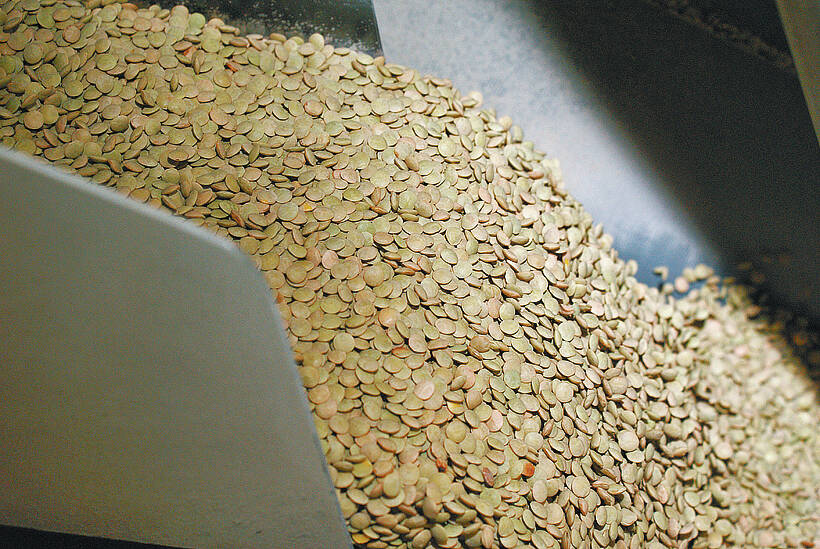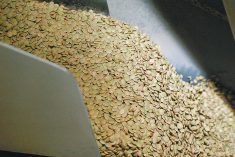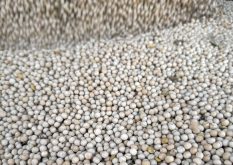Most analysts expect stronger crude oil prices in the second half of this year but have mostly abandoned ideas that crude could reach US$100 per barrel by year end.
Currently, crude prices are bouncing around, but North American diesel prices in recent weeks have risen sharply because of problems at American refineries.
Global oil demand is growing, reaching record levels this summer, and production is also up, even as the Organization of Petroleum Exporting Countries and Russia, collectively known as OPEC+, limits its output.
At points this summer, demand has outpaced production causing global stocks to tighten, which in early August lifted crude oil prices.
Read Also

Green lentil market oversupplied
Farmers in Western Canada can expect price pressure on their new crop of green lentils, as the available supplies among the world’s major lentil-growing nations increase significantly.
However, the rally was limited by questions about the sustainability of growing demand given the problems in China’s economy and the expectation that the U.S. Federal Reserve will again raise interest rates.
West Texas Intermediate has mostly ranged between $65 and $80 per barrel this year, but climbed into the low $80s in late July and stayed elevated for a few weeks as the market’s attention focused on the draw down in global stocks and hopes that declining inflation would allow central banks to halt their interest rate hikes.
But U.S. inflation edged up to 3.2 percent in July after falling to three percent the month before. Last week, U.S. Federal Reserve Chair Jerome Powell said in a speech that inflation, at 3.2 percent in July, remains too high and the bank is prepared to raise rates again and hold them at elevated levels until inflation is sustainably falling toward the bank’s objective of two percent.
Higher rates would be an increased damper on the American economy, which has been remarkably buoyant. If economic growth slows, it would also reduce demand for oil.
The world’s other mammoth economy is China. Early this year, forecasts that the Asian giant would boom this year following the end of draconian COVID restrictions gave weight to those who expected soaring oil demand would push prices to $100 by the end of the year.
But China’s growth has lagged expectations. Its real estate sector seems especially troubled. It overbuilt in the good times and amassed huge debts. Local governments also went into debt to build the infrastructure needed to serve all the building.
Now, with growth lower than expected, they are having trouble keeping up with debt payments and that could lead to problems in the banking sector if developers default on their debt.
Even with these drags on global growth, crude demand was running at a record high this summer, at about 103 million barrels per day, up a little more than three million over last year’s average level, according to the International Energy Agency.
Demand this summer is running a little higher than global output because OPEC+ is limiting production. Its production is 50.7 million barrels per day, down more than two million from the start of the year, the IEA said in its August report,
That reduction is partly made up by an increase of 1.6 million barrels by non-OPEC+ producers, to 50.2 million barrels per day, with growth in the U.S. accounting for the lion’s share of that increase.
As the peak of summer travel season winds down, demand is expected to moderate a little this fall, but Saudi Arabia will likely continue to limit its production and so the supply-demand balance will remain tight.
That could keep prices supported near the top of what we’ve seen so far this year. A poll of oil analysts carried out by the Wall Street Journal in early August showed that on average they see WTI averaging $83 through the fall into the first quarter of next year. On Aug. 25, WTI closed a few cents shy of $80.
Meanwhile diesel prices have shot up after moderating to recent lows in June.
Diesel rose last year as Europe ended its imports of the fuel from Russia because of its invasion of Ukraine. There were months of supply adjustments at the same time that demand is normally strongest because of cold weather fuel oil demand.
Things settled down by June, but diesel rallied again through summer. One reason is that U.S. refiners along the Gulf Coast and elsewhere had unplanned outages and also production problems related to summer temperatures that were hotter than normal.
And outside of North America, the reduced supply of Saudi Arabian oil has an impact. Saudi medium sour crude is ideal for diesel production but the diesel yield from other types of crude are lower.
With diesel supply lower than normal, the profit spread between crude oil prices and diesel prices are currently high.















